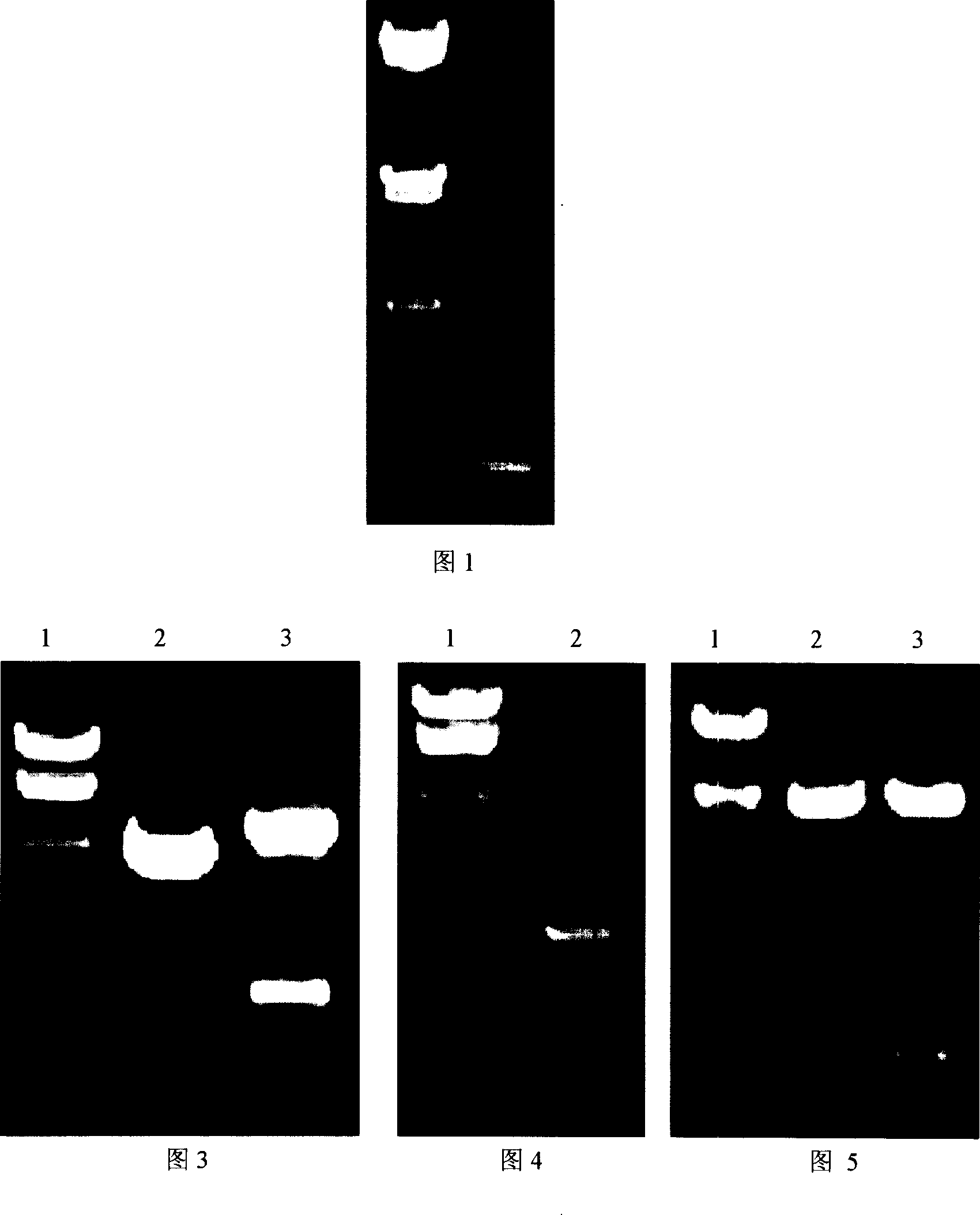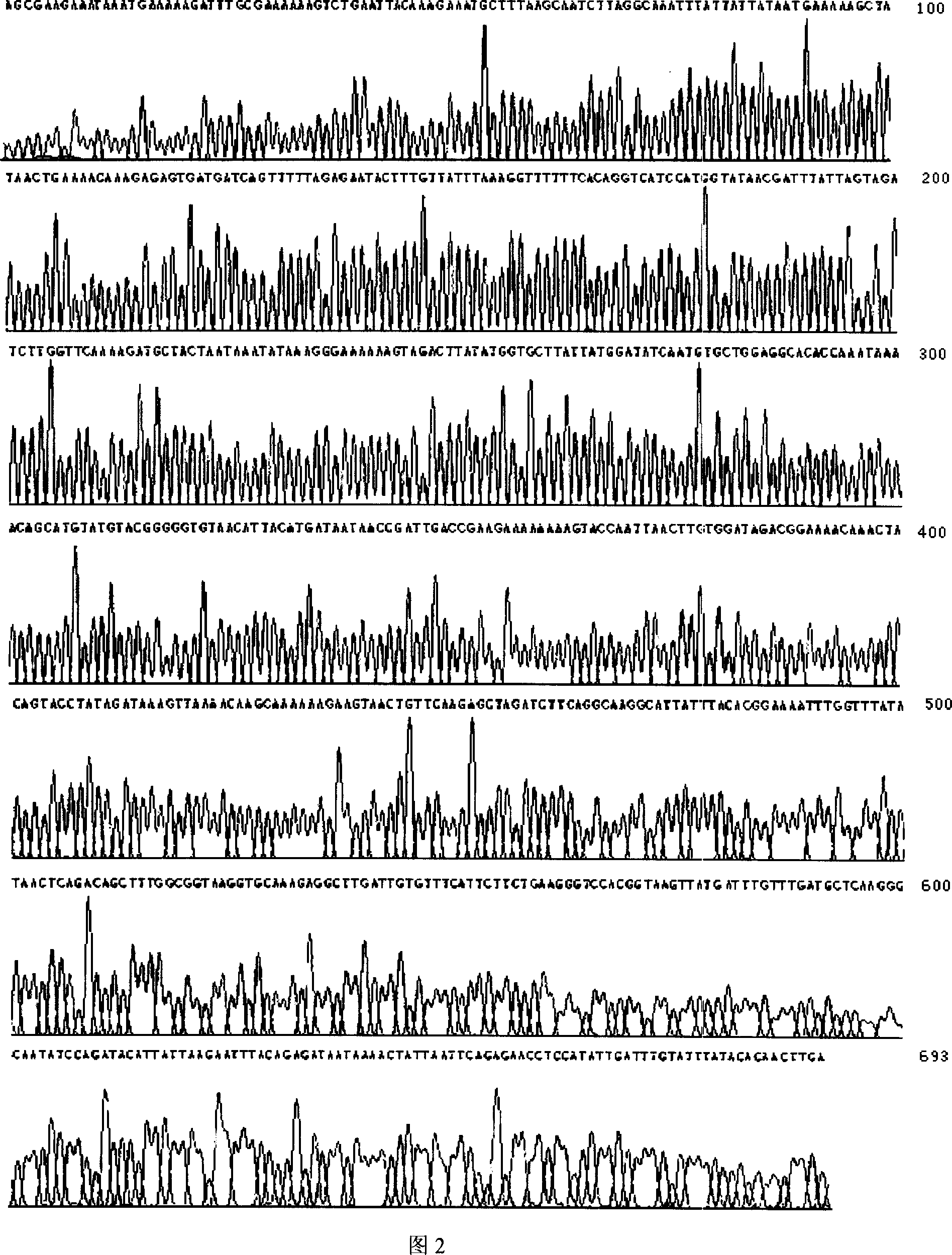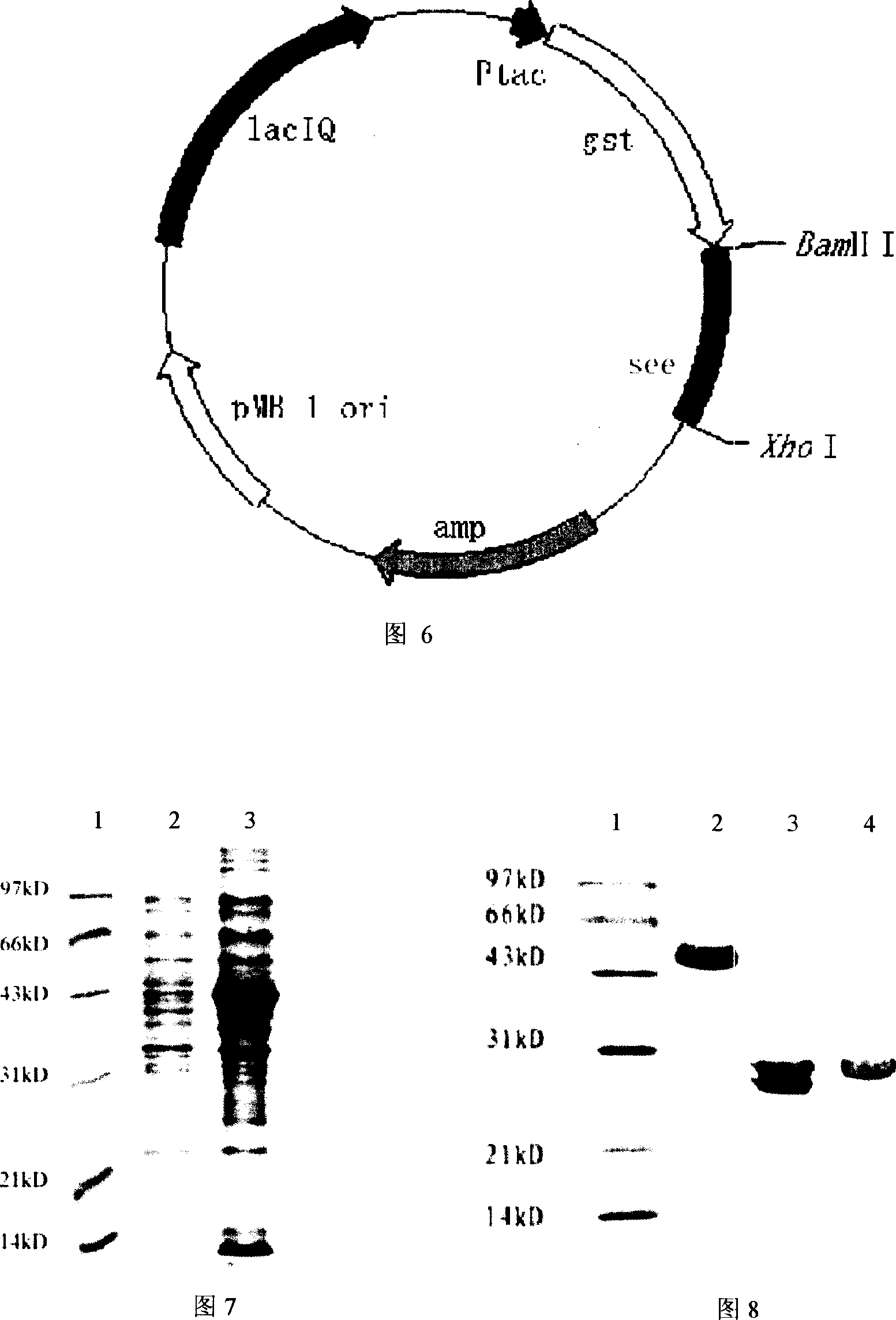Staphylococcus aureus enterotoxin E and its preparation and uses
A staphylococcus enteric and golden yellow technology, applied in the field of bioengineering, can solve the problems of poor adsorption selection specificity, antigenic determinant and product activity changes, and achieve the effect of simple steps and fast purification speed
- Summary
- Abstract
- Description
- Claims
- Application Information
AI Technical Summary
Problems solved by technology
Method used
Image
Examples
Embodiment 1
[0029] Embodiment 1: the gene cloning of SEE and the construction of pUCm-T-SEE recombinant plasmid
[0030] PCR amplification of the gene sequence encoding the mature peptide of SEE containing endonuclease sites: design the following pair of primer sequences:
[0031] SEQ ID NO.3: (upstream primer, the underlined part is the restriction site of BamH I) 5'-atg a gg atc cag cgaaga aat aaa t-3',
[0032] SEQ ID NO.4: (downstream primer, the underlined part is the Xho I restriction site) 5'-atc t ct cga g tc aag ttgtgt ata aat-3',
[0033] The genome template of Staphylococcus aureus (FRI326) was used for PCR amplification according to the following conditions, and a 710bp DNA fragment was amplified. See Figure 1 for the gel electrophoresis of the PCR results.
[0034] PCR system:
[0035] h 2 O: 60 μL
[0036] Buffer(10×): 10μL
[0037] Mg 2+ (25mmol / L): 8μL
[0038] BSA (5mg / mL): 10μL
[0039] Primer-up (25μmol / L): 4μL
[0040] Primer-down (25μmol / L): 4μL
[0041...
Embodiment 2
[0060] Embodiment 2: the expression of recombinant SEE
[0061] Construction of SEE expression strain: Extract the plasmid from Escherichia coli DH5α containing the pGEX-4T-1-SEE recombinant plasmid, transform it into Escherichia coli BL21 (DE3), and screen positive clones through antibiotic resistance to obtain a large amount of expression GST- Engineering bacteria strain of SEE fusion protein.
[0062] Expression of the fusion protein GST-SEE: Inoculate a single colony of the above-mentioned engineered bacteria into 5 mL of LB medium containing ampicillin, culture with shaking at 37° C. for 6 h, and use it as a seed solution. The seed solution was inoculated in 2×YT medium containing ampicillin at an inoculation amount of 1-5%, cultured with shaking at 37°C for 4 hours, and 0.1mol / L IPTG was added at a volume ratio of 0.01%-0.1% to induce expression for 5 hours.
Embodiment 3
[0063] Embodiment 3: the purification of recombinant SEE
[0064] Pretreatment of samples: the bacterial solution induced by IPTG was centrifuged at 10,000 rpm at 4°C, and the supernatant was discarded to collect the precipitate. The pellet was resuspended with PBS, which was 1 / 10 of the volume of the original bacterial solution, and the suspension was placed in a FRENCH cell disruptor, crushed at 700 psi, and the suspension was viscous. Afterwards, continue to sonicate for 2 min with a sonicator to degrade the nucleic acid and reduce the viscosity of the cell lysate. After sonication, 20% Triton-100 was added to the cell lysate to a final concentration of 1%, mixed thoroughly, and left to stand in an ice bath for 30 minutes. After standing still, the cell lysate was centrifuged at 12000 rpm at 4°C for 30 min, and the supernatant was stored at low temperature for later use. The supernatant was sampled for SDS-PAGE detection, and there was a relatively dense band at the molec...
PUM
 Login to View More
Login to View More Abstract
Description
Claims
Application Information
 Login to View More
Login to View More - R&D
- Intellectual Property
- Life Sciences
- Materials
- Tech Scout
- Unparalleled Data Quality
- Higher Quality Content
- 60% Fewer Hallucinations
Browse by: Latest US Patents, China's latest patents, Technical Efficacy Thesaurus, Application Domain, Technology Topic, Popular Technical Reports.
© 2025 PatSnap. All rights reserved.Legal|Privacy policy|Modern Slavery Act Transparency Statement|Sitemap|About US| Contact US: help@patsnap.com



